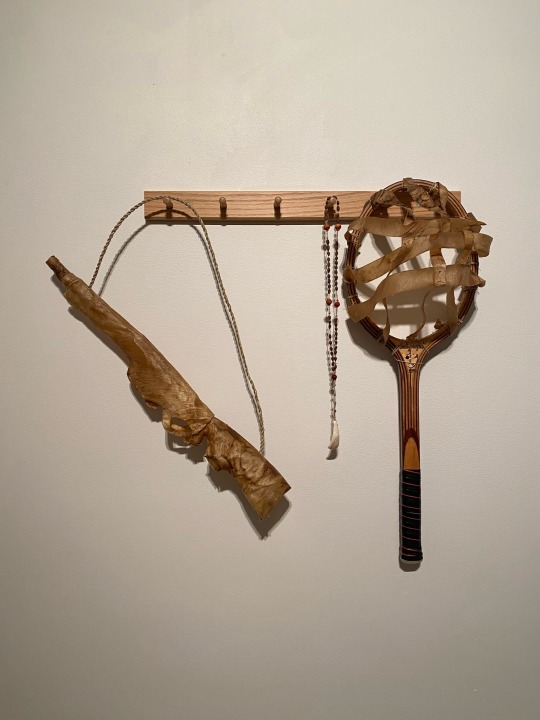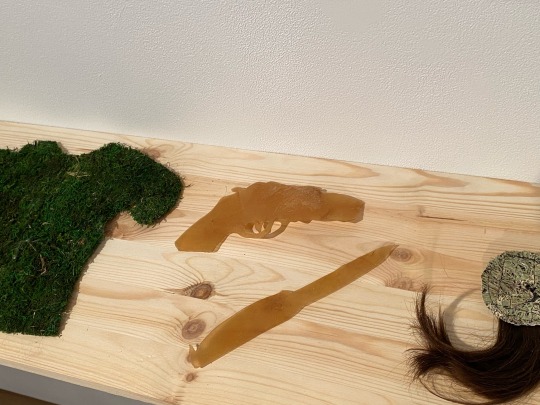#chippewas
Explore tagged Tumblr posts
Text
instagram
Celebrating National Indigenous Peoples Day! 🌍🌱 Today, AND-ROD Construction stands in deep appreciation of the land we inhabit and work on, the Treaty 72 Territory. We also respectfully acknowledge the Chippewas of Saugeen and the Chippewas of Nawash, together forming the Saugeen Ojibway Nation, as the rightful custodians of this traditional territory.
With deep respect, we honour their rich heritage and culture. 🌾✨
#AndRodConstruction#Ontario#NacionalAboriginalDay#IndigenousPeoplesDay#national indigenous people day#indigenous people#Chippewas#saugeen#nawash#Saugeen Ojibway#heritage#culture#respect and honor#Instagram#national aboriginal day
2 notes
·
View notes
Text
Central Michigan Chippewas Gymnastics

#NCAA#Central Michigan University#Chippewas#gymnast girl#gymnastics#gymnast#bootie peach#sexy peachy bum 🍑#peachy butt#peach ass
0 notes
Text
🪶 / in the source link below, you’ll gain access to #438 gifs of khadijha red thunder in after (2019), after we collided (2020), and youtube videos. she was born in the year 1994 and is of chippewa cree, black, and white descent, so please cast appropriately when using my resources. all of these gifs were made from scratch, so you may edit these as much as you’d like, but please don’t redistribute or claim as your own. please refer to my rules for further information.
note: this pack is completely free and is also accessible through a zip file.



#khadijha red thunder gif pack#khadijha red thunder gif hunt#rpt#rpc#rph#gif pack#gif hunt#*#*gh.#gh.#khadijha red thunder.#fem.#actor.#model.#native.#chippewa cree.#black.#african.#poc.
221 notes
·
View notes
Text

Photograph of Lt. Thomas Whitecloud Entering a C-47 for a Parachute Jump Training
Record Group 75: Records of the Bureau of Indian AffairsSeries: General Photographs of Indians
This photograph shows Lieutenant Thomas Whitecloud climbing into a C-47 for paratrooper training at Fort Benning, Georgia. An armband on his left arm indicates that he is a medic. He wears a helmet and his parachute pack.
#archivesgov#indigenous peoples day#columbus day#native american#chippewa#paratroopers#army medic#wwii#world war ii#fort benning
117 notes
·
View notes
Text
Any Chipps fans?

60 notes
·
View notes
Text
Researchers say newly discovered archival records reveal an important connection between Ontario First Nations and Irish famine victims.
The Irish Potato Famine was a period of starvation and disease in Ireland, and one of the most traumatic events in modern Irish history. Year after year, the country's potato crop failed. By the time the worst was over, one million people had died of disease and starvation. Survivors were forced to emigrate. In the summer of 1847, Toronto gave refuge to 38,000 Irish famine victims — at a time when Toronto's population was only 20,000.
The part of this history that is virtually unknown is the contribution to the relief fund from Indigenous communities in Canada.
"At least 15 bands answered the call and requested that donations be deducted from their government annuities, added to the fund, and then sent to 'our suffering fellow subjects and Christian brethren in Ireland and Scotland,'' according to Mark McGowan's research. McGowan is a professor of history at the University of Toronto and has spent time going through the archival documents. [...]
Continue Reading.
Tagging: @politicsofcanada
#cdnpoli#First Nations#Foreign Policy#Ireland#Indigenous politics#Indigenous history#Ontario#Mohawks#Haudenosaunee#Chippewa#Delaware#Wyandotte#Mississauga#Saugeen#Lake Huron Ojibwa#Moravian Ojibwa
228 notes
·
View notes
Text
From Midland Michigan (part 2)

This shows on Google maps where the Chippewa River (lower left) joins the Tittabawassee River in Midland Michigan. This spot is home to The Tridge, a three-way pedestrian bridge over these rivers.

I have posted here about this bridge and more info can be seen on Google about The Tridge. The next pic was taken after I walked up the steps seen above 👆

This is a peaceful place and also the starting point for a bike and walking trail. The trail runs for miles to the northwest and is built on old railroad tracks.
I like visiting here and thought I would stop again as long as I was on town yesterday.
Have a great Friday y’all.
#Tittabawassee river#michigan#Chippewa river#the Tridge#river#nature#midland#rail trail#original photographers#original photography#photographers on tumblr
55 notes
·
View notes
Text
I still have boots that have not yet made it to my blog, but today the choice was Chippewa engineers. These could use a bit of cleaning and a polish, but they seem to be doing just fine for boots that I bought at least 30 years old. 🖤 As with all my boots, I love this pair. Durable, great sole, great feel, and the jeans should, of course, stay tucked in. 😉 Make it a great day, bootmen. 👊



67 notes
·
View notes
Text

source - https://www.facebook.com/groups/ithoughtitwasanormalpicture
Every year, dozens of local boat owners in Wisconsin band together to move a giant floating island on Lake Chippewa, also known as the Chippewa Flowage. This floating island, known as the "Forty Acre Bog," is composed of peat, plant roots, mud, and even mature trees. These trees act as sails, catching the wind and moving the island around the lake. When the bog drifts and blocks a crucial bridge connecting the east and west sides of the lake, it requires a community effort to push it back into position using their boats. The floating bogs formed over time as peat bogs from the lake's swampy bottom rose to the surface, creating a habitat rich in biodiversity. Moving the bog is a complex task that relies on favorable wind conditions, and it often requires multiple attempts to place it correctly, or it will drift back within days. This annual task, while challenging, highlights the community's dedication to preserving the natural environment and maintaining access across the lake. The floating bog is legally protected and cannot be broken apart, adding to the complexity of the task. Despite their best efforts, there are occasions when the bog gets stuck on obstacles like rocks, necessitating repeated efforts to clear the passage.
68 notes
·
View notes
Text

American Indian Gothic from the Indian Self-Rule portfolio, David P. Bradley, 1983
Lithograph on paper 30 ⅛ x 22 ¼ in. (76.5 x 56.5 cm) Smithsonian American Art Museum, Washington, DC, USA
#art#painting#david p bradley#contemporary art#pop art#indigenous art#native american art#1980s#20th century#20th century art#lithograph#print#works on paper#smithsonian american art museum#chippewa#american#indigenous#indigenous artists
52 notes
·
View notes
Text
Writing Ojibwe Characters: A Basic Guide
Creating well-rounded, respectful Ojibwe characters takes a bit of research and consideration. This guide gives a quick overview of things to think about when writing Ojibwe people and incorporates some context to avoid common pitfalls. Writing any Indigenous character means approaching with care, so let’s dive in!

1. Understand Ojibwe Culture and Community
Get to know the basics of Ojibwe culture, beliefs, and values. My people, the Ojibwe (also spelled Ojibwa, Ojibway, or Chippewa) are part of the Anishinaabe people. We are present across Canada and the northern U.S. Midwest, with diverse communities that each have their own practices and perspectives.
Community-centered thinking: Many Ojibwe people have a strong sense of connection to community and family. Recognize that we tend to prioritize our connections and often have a deep relationship with our elders and youth.
Language and terminology: Use respectful terms. The Ojibwe language (Anishinaabemowin) is central to identity, even if a character doesn’t speak it fluently.
2. Avoid “Spiritual Mysticism” Stereotypes
Steer clear of clichés about Indigenous mysticism. Instead, focus on how Ojibwe spirituality is lived in everyday ways—whether through ceremonies like smudging, seasonal celebrations, or even just respecting the land and ancestors. Characters don’t need to be “shamans” or mystical guides to show their culture.
Spirituality in balance: While many Ojibwe people honor spirituality, each person practices differently. Just as in any culture, some may be very connected to it, while others are more secular.
3. Use Realistic Names and Nicknames
Ojibwe names often have meaning and are given in specific cultural contexts, sometimes in ceremonies or after significant events. If using an Ojibwe name, make sure it’s well-researched, and consider including a backstory on how it was given to your character.
Nicknames are common and can range from family names to personal traits. Think about nicknames that resonate with your character’s personality and family background rather than something “exotified.”
4. Research Traditional Roles, Not “Warrior” Stereotypes
Ojibwe people are often cast as “warriors” or “stoic fighters,” which is limiting. In reality, Ojibwe communities have had diverse roles throughout history, including diplomats, healers, artisans, teachers, and more.
Consider what makes sense for the time and place your character lives in—an Ojibwe character could be a modern-day artist, teacher, software developer, veteran, or lawyer. Complex portrayals highlight our adaptability and contemporary lives.
5. Acknowledge History Without Making Trauma the Focus
Many Indigenous communities, including Ojibwe, have endured hardships like colonization, boarding schools, and loss of land. However, it’s essential not to reduce characters to trauma alone. Show their resilience, joy, humor, and everyday experiences alongside their histories.
Avoid “tragic backstory syndrome”: A good character is multidimensional. Balance struggles with strengths, showing how they thrive in the modern world while honoring their roots.
6. Respect Language and Use It Thoughtfully
If your character speaks or knows Anishinaabemowin, use it respectfully and sparingly unless you're fluent. Small phrases or words can add depth without risking inaccuracies. If they use Ojibwe words, provide a translation for context.
Resource suggestion: Check out the Ojibwe People’s Dictionary for phrases, pronunciation, and examples of how the language fits into daily life.
7. Research and Connect With Indigenous Resources
For non-Indigenous writers, it’s important to engage with authentic sources and, if possible, speak with Ojibwe individuals or consult books, articles, or online resources created by Ojibwe authors and scholars.
Media to check out: Look for books, films, and articles by Ojibwe creators (such as works by Louise Erdrich or Gerald Vizenor) for direct perspectives.
8. Show Ojibwe Humor and Resilience
Ojibwe humor is a big part of the culture—often dry, sarcastic, and shared among family and friends. Including humor adds authenticity and breaks away from “stoic” stereotypes. Remember, we laugh, joke, and enjoy life as much as anyone else!
9. Give Credit and Respect Acknowledgments
Mention that you’ve researched Ojibwe culture and language if possible, and consider a small acknowledgment to the sources you used. It shows respect for our culture and the people who helped make the character accurate and relatable.
Sample Character Traits for Inspiration:
Joyful and witty, known for quick humor but deeply thoughtful.
Family-oriented, regularly calling or visiting relatives or helping out in the community.
Resourceful and resilient, finding creative ways to navigate the modern world while honoring traditional values.
Quietly proud, choosing to celebrate their heritage subtly but meaningfully, like wearing Ojibwe beadwork or carrying traditional items.
Writing an Ojibwe character respectfully and fully means creating someone real and complex. Remember, the best portrayals come from genuine understanding and thoughtful depiction. Happy writing, and Chi miigwech (thank you very much) for taking the time to represent us well! 🪶✨
And if you are ever confused, ask! I love answering questions about my culture!
25 notes
·
View notes
Text

Ne-gon-e-bin-ais II (aka Flat Mouth II) - Ojibwa - circa 1898
81 notes
·
View notes
Text





ᓄᐦᑕᐃᐧᕀ ᐊᐢᑯᑖᐢᑯᐱᓱᐣ nohtawiy askotâskopison, My Father’s Cradleboard by Morgan Possberg Denne
The New Gallery, November 18 - December 22, 2023
“Cradleboards have been used for thousands of years by our ancestors to carry and love for our future generations. They have protected us, acted as an external womb, and given us a place as children to watch our parents' culture and learn from a safe distance. I’ve always wondered if the fact that neither my father, his father, or myself was ever put in a cradleboard may have had a long term impact on our development, personhood, and our coping mechanisms to the ways that colonialism, residential schools and the foster care system has affected my family.
Now as an adult I deeply wish I could rewind the clock and put myself, and my father before me, and his father before him in a cradleboard as a child. To softly sing songs to us, give us safety, and to give us a connection to our culture in a safe environment. Maybe this would fix things. As kids when we were supposed to be kept safe and playing in the woods we were instead being prepped for the meat factory - the eternal meat grinder of colonialism.
The western world teaches us to push aside this childhood imagining and innocence - “These things can’t be undone!”, but what if they could? In another world somebody took better care of us, in another time we learned to drum and sing and dance, in another place we were listened to by adults who had the capacity to love and care for us.
These hot chest and aching throat feelings, the times of biting back angry tears and saying “It’s fine” have to count for something….right?”
“Morgan Possberg Denne is Two-Spirit millennial scoop and foster care survivor; with settler, Cree, Metis, and Chippewa blood connections. They have grown up in treaty 7 territory, and have relatives in southern and northern Ontario. Morgan creates imaginative, illustrative objects which could be seen as pieces of possible narratives, different ways to connect with the past and potential futures through layers of abstraction with no right or wrong answer. What matters to them is not accurately recreating the past or to predict the future, but rather to capture an inner truth and a possible alternative reality of colonial experiences. In a sense, creating new culture from a series of “what-ifs” and new stories / lore. Their work has been recently shown at the Confederation Centre for the Arts and Gallery Gachet.”
(Photos belong to me and the description and artist bio are courtesy of The New Gallery’s website)
[IDs:
1. a large wall hanging made from fish leather,
2. a close up of the same piece. the artwork has faint text cut out of the green tea tanned fish that reads “hey it’s not your fault, you know that right?”
3. a photo of the space showing a video projected onto several fish skins, a table with a vest and a hat made of fish leather, and on the table are cartons made from rawhide.
4. a coatrack on which are a rawhide hunting ruffle and rawhide fishing net resembling a badminton racket
5. a shelf seen in the background of image 3 containing a astro-turf shirt, a hand gun and pocket knife made from rawhide and a fish leather circular clip with a piece of dark hair hanging off the shelf.]
#my picks#morgan is a dear friend of mine <3#they taught me how to tan fish leather!#art#indigenous art#cree#métis#chippewa#canadian art#contemporary art#indigenous contemporary art#curation#artist run centre#artists#fish leather#leather#rawhide#traditional art#sculpture#installation#video art#my images
54 notes
·
View notes
Text



In celebration of Native American Heritage Month, we'd like to highlight Edward Rogers, one of the first Native American graduates of the law school (1904). Rogers first enrolled at Dickinson Law School but after a year decided to attend the University of Minnesota. While in law school, Rogers played football and was named captain of the Gopher team in 1903. During the 1903 game against Michigan, Rogers kicked the game-tying extra point, which secured their first win of the Little Brown Jug.
After coaching football for a year after graduation, Rogers practiced law for 62 years, 46 of them as Cass County Attorney. During that time, he was active in Chippewa affairs, serving as their tribal attorney from 1941-1945, and he was also elected Vice President of the National Congress of American Indians' (NCAI) first Executive Council. Rogers was named Outstanding County Attorney in the US in 1962, and he was also inducted into the College Hall of Fame (1968) and American Indian Athletic Hall of Fame (1973).
#riesenfeld center#umn#university of minnesota law#university of minnesota law library#umn law#archives#special collections#law school#ed rogers#gopher football#little brown jug#chippewa#ojibwe#native american heritage month
20 notes
·
View notes
Text

Dawnshire Drive, Chippewa Lake, Ohio.
67 notes
·
View notes